Welcome to our take on what to see in Yerevan, the capital of Armenia. We’ve visited Yerevan quite a few times now and have always enjoyed our time there. Our suggestions of what to do in Yerevan include not only the city’s most recognisable sights but also some that you won’t find in any guide books or other travel-related blogs.
A comprehensive guide including alternative things to do in Yerevan
Yerevan is a walkable city and if you don’t mind putting in some legwork, most places included here can be seen on foot. For convenience, I’ve divided the city into five sections relating to the places of interest within it: Republic Square in the centre, followed by north, south and west of Republic Square and finally sights that are away from the city centre altogether.
I would allocate at least a couple of full days to see everything mentioned in the post. I appreciate everyone has their own pace but I’ve tried to give an indication of the time required for four of the sections that are walkable and public transport options for the final one.
What to do in Yerevan mapped out
Republic Square
Top of most visitors things to see in Yerevan, and bang in the city centre, Republic Square is the most logical place to begin exploring the city. Known locally as Hraparak (“The Square”), Republic Square was originally designed by Alexander Tamanian (sometimes spelt Tamanyan), a neoclassical architect and the guy responsible for laying down the blueprint for modern Yerevan in the 1920s. Originally called Lenin Square, a 7-metre statue of the Soviet leader atop an 11-metre pedestal was erected in the square in late 1940 and remained there until April 1991 at the time of the dissolution of the Soviet Union. Unlike the statue, the square’s original architecture is still in situ and it is grand, very grand indeed!
Buildings of note include the History Museum of Armenia and the National Gallery of Armenia, which are next to each other. The former was constructed first, in the 1950s, and the National Gallery was completed in 1977. The Armenia Marriott Hotel is another fantastical structure that also dates from the ‘50s plus there are a few administrative buildings on the square, including Government House, that were also built around the same time.
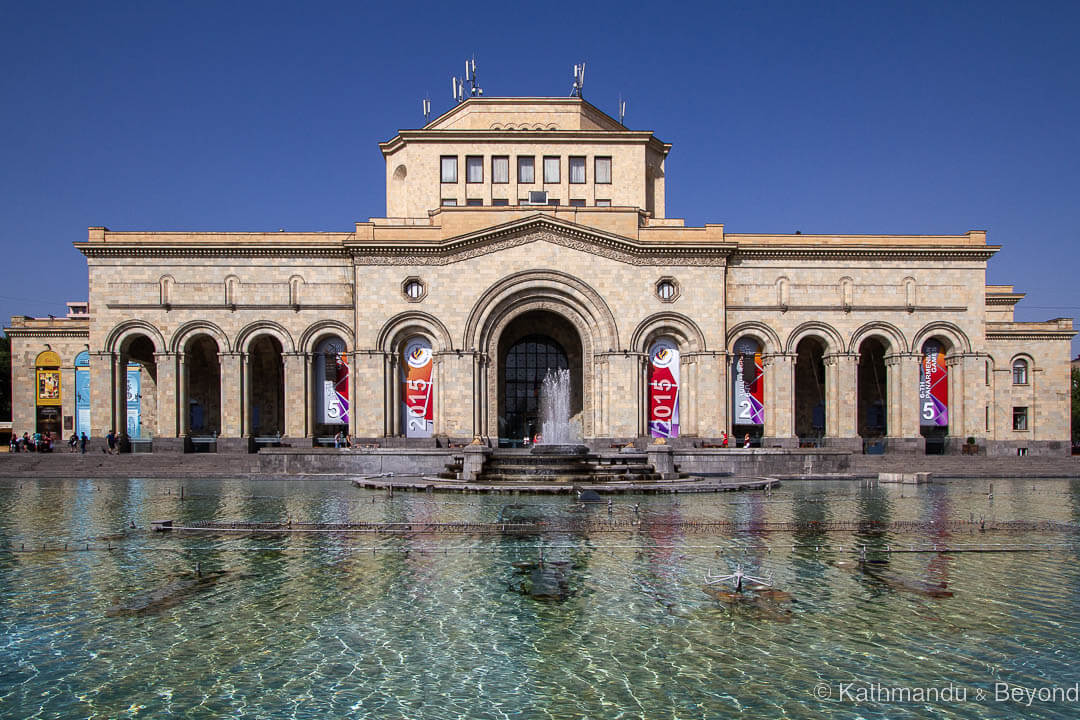
If Republic Square is the first place you visit in Armenia then it will also be the first time that you notice the distinctive pink tufa, a limestone rock of volcanic origin that is used as a building material not just in Yerevan but in many towns and cities across the country. From what I’ve read, there is an abundance of the stone in Armenia and the prominent use of it in Yerevan has earned the metropolis the nickname, the “Pink City”. It’s great to photograph in either the early morning or later afternoon light if you’ve got a sunny day.
There is also a musical fountain on the square which is best seen after dark when it is all lit up and, before leaving this part of the city, it is also worth checking out Republic Square Metro station. Not so much the interior, which is often the more interesting part of Soviet metro stations, but rather the large open courtyard with its decorative (and no longer functional) fountain located outside the station’s main entrance.
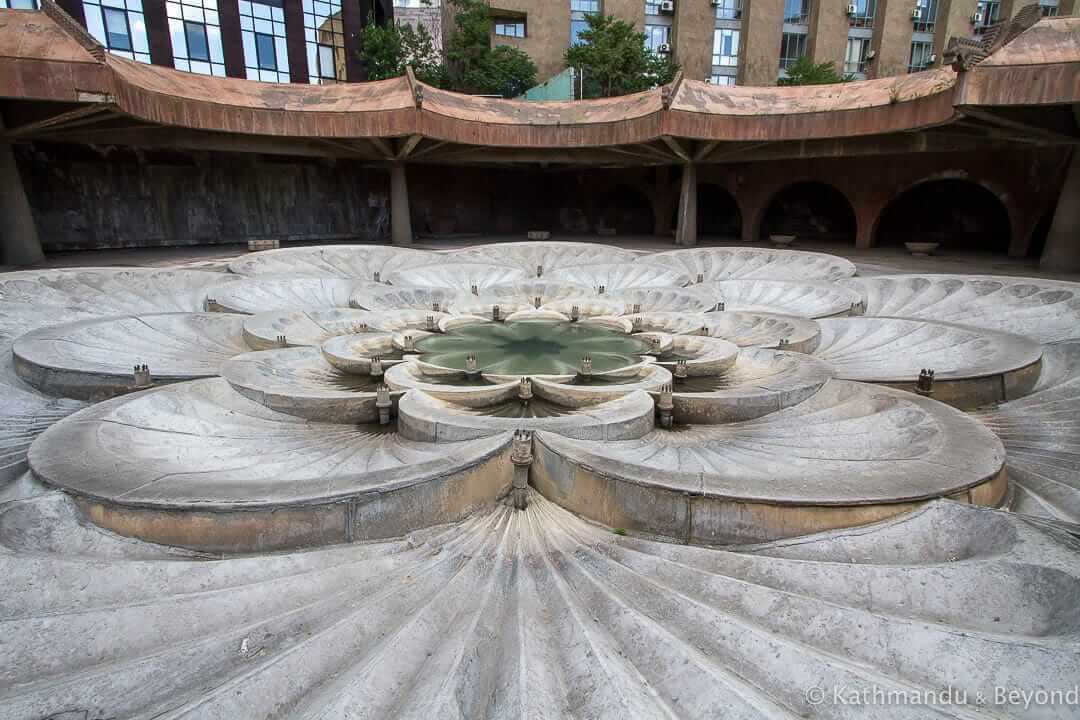
Places of interest near Republic Square
Vernissage market
A short distance southeast of Republic Square you’ll find Vernissage market, an outdoor flea market that dates back to Soviet times. Originally near the building of the Union of Armenian Artists (close to the Moscow Cinema), the market was used as a place for painters at the time to display, and presumably sell, their art. The market moved to its current location when it grew bigger. What’s on display at the market has also expanded over the years and as well as paintings you will find jewellery, rugs, carvings and other forms of handicrafts. It’s a good place to pick up some Armenian souvenirs and, depending on your bargaining skills, you should be able to negotiate on the price a little. Vernissage market only operates on Saturday and Sunday, from 9am until 6pm so if you’re looking for ideas on what to do in Yerevan on a weekend, this market is a good option.
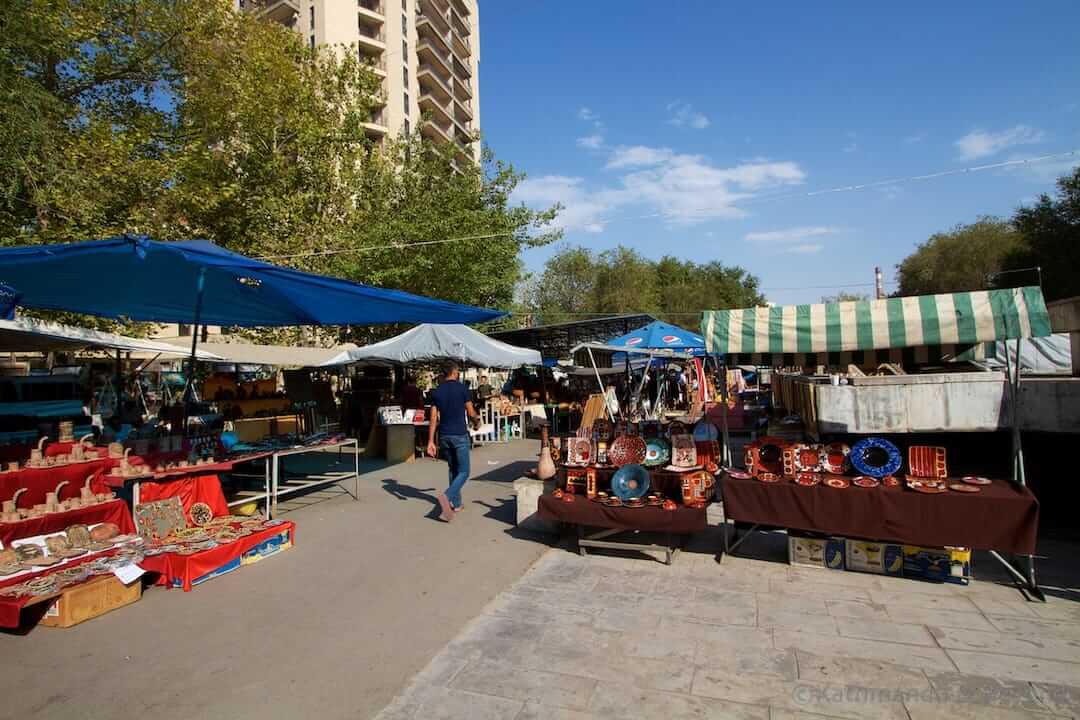
Freedom Square
Freedom Square is the city’s other major square. At its centrepiece is the Yerevan Opera Theatre, another fine example of neoclassical architecture that is accredited to Alexander Tamanian. Freedom Square has traditionally been associated with protests and rallies etc. and is seen by many Armenians as a symbol of democracy.
Freedom Square is best reached via Hyusisayin Poghota, aka Northern Avenue, a pedestrianised thoroughfare that is home to some of the city’s most exclusive residential apartment buildings as well as high-end shops, restaurants, hotels and the like. In all honesty, the thoroughfare is not that interesting but it is the most convenient route to get from one square to the other. Personally, I would take the less direct route and check out the Moscow Cinema, which dates back to 1936 but has been revamped on more than one occasion with the latest being in 1999. It has retained many of its period features, however, and is worth the detour.
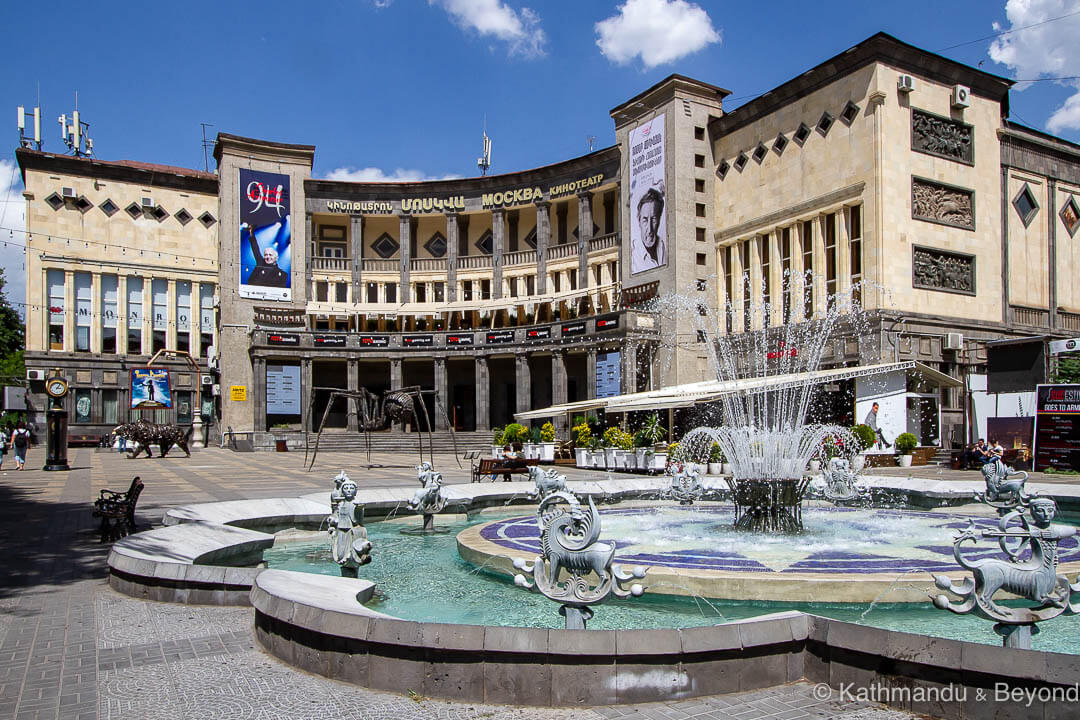
Time required to see the places of interest in and around Republic Square
Assuming you don’t go inside any of the museums, half a day is more than ample to see places of interest in and around Republic Square.
Place of interest north of Republic Square
The Cascade
Heading north, it won’t be long before you hit one of Yerevan’s most recognisable landmarks, the unfinished Cascade. Walking along the dual-pathway that leads up to the Cascade, the first thing you’ll come across is a rather stern-looking statue of Alexander Tamanian, who appears to be pursuing his architectural designs for a new Yerevan.
Linking downtown Yerevan with Victory Park and the residential areas beyond the park, the original concept for the Cascade belongs to Alexander Tamanian but nothing was done about it until quite a long time after his death in 1936. Work eventually began on this series of limestone stairways in the mid-1970s with the bulk of the funding coming from Moscow. The chief architect now in charge of the undertaking, Armenian-born Jim Torosyan, partially kept to Tamanian’s vision for the project but he also naturally interjected ideas of his own, which included a network of courtyards and open-air gardens, function halls and an internal escalator. The idea was for the place to be used as a kind of cultural centre. The first phase of the Cascades was completed in 1980 but for reasons I can’t fathom but may be budget-related, work on the project halted thereafter. A devastating earthquake (1988) and the collapse of the Soviet Union (1991), both of which resulted in economic hardship for Armenia, further hindered more work at the time and the Cascade became yet another Soviet relic that nobody knew what to do with.
Work on the Cascade eventually reconvened once more when an American-Armenian philanthropist and art collector, Gerard L Cafesjian, took over the financial reins and transformed a large part of the structure into art galleries. This second phase of construction/rejuvenation lasted from 2002 until 2009. The project remains unfinished because a third phase involving the construction of a large museum on the top level has barely gotten off the ground and is a long way from being completed.
The Cascade is an interesting place to visit and it is full of contemporary art and other exhibits, much of which has come from Cafesjian’s private collection. It is free to enter the Cascade but if you want to visit the exhibition galleries inside the Cafesjian Centre for the Arts there is a nominal entrance of 1,000 AMD (about US$2). The galleries are open Friday through Sunday.
If you are keen on seeing all of the levels, it can take a surprisingly long time to visit the Cascade. From the highest tiers, you will get a decent view of Mount Ararat if the weather is playing ball but, in my opinion, the view is better, and less interrupted, from the former Aragil Restaurant inside Victory Park (see below).
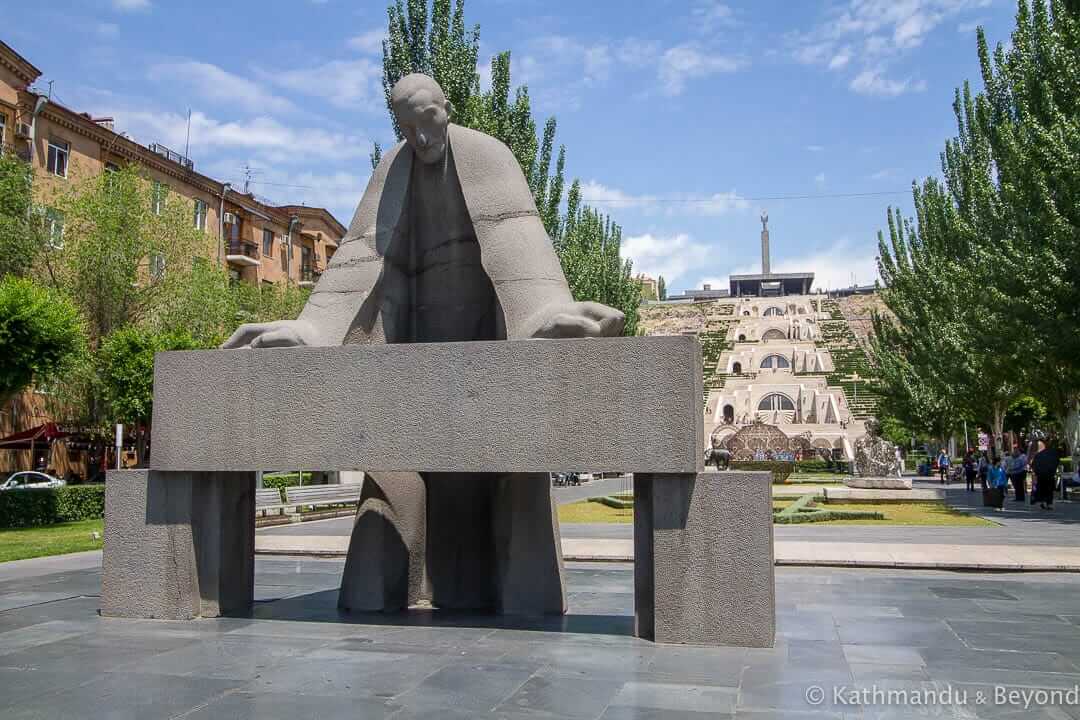
Memorial of the 50th anniversary of Soviet Armenia
At the top of the Cascade is the Memorial of the 50th anniversary of Soviet Armenia. Completed in 1967, the 65-metre obelisk commemorates the 50th anniversary of Soviet rule in Armenia. The top of the monolith symbolises a crown from the Urartian period (*).
(*) Urartu, which dates back to around 860BCE, was an ancient region centred around Lake Van, that is now in modern-day Turkey but historically was part of the Armenian Highlands.
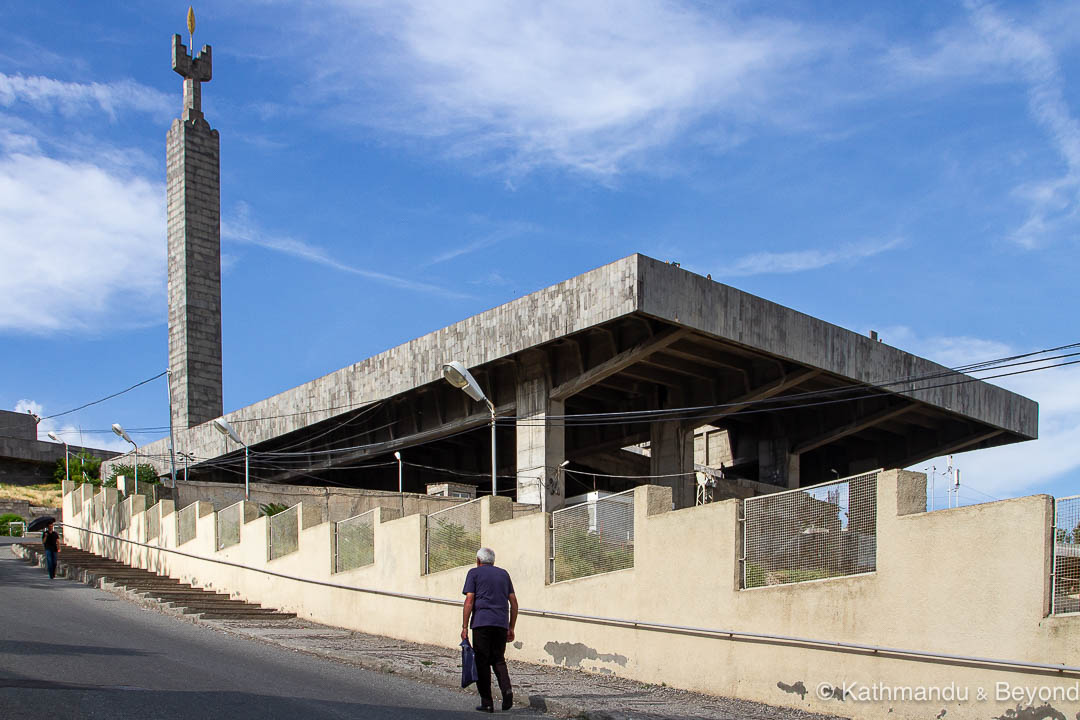
Nairi Zaryan 74 (Northern Ray Complex)
Before heading across the road and into Victory Park, you can walk the short distance along a dirt track to the area around the Ukrainian Embassy. The reason to do this is that this vantage point provides a splendid view of one of Yerevan’s most striking structures – the twin residential buildings known as Nairi Zaryan 74/Northern Ray Complex. Although they may look it, these brutalist skyscrapers do not date from the Soviet period and were only added to the capital’s skyline in 2013. I had a run-in with a security guard outside the Ukrainian Embassy who thought I was taking photos of his building. He was downright unpleasant with me and so I got arsey back and he ended up taking a photo of me before slipping back into the embassy compound. I haven’t tried to return to Ukraine since the run-in but hopefully, he was just calling my bluff and I’m not on some sort of blacklist! If you do go and take a similar photo and you see a beefy-looking Ukrainian outside the embassy, please do give him the middle finger from me! (Joke – it’s probably not advisable!)
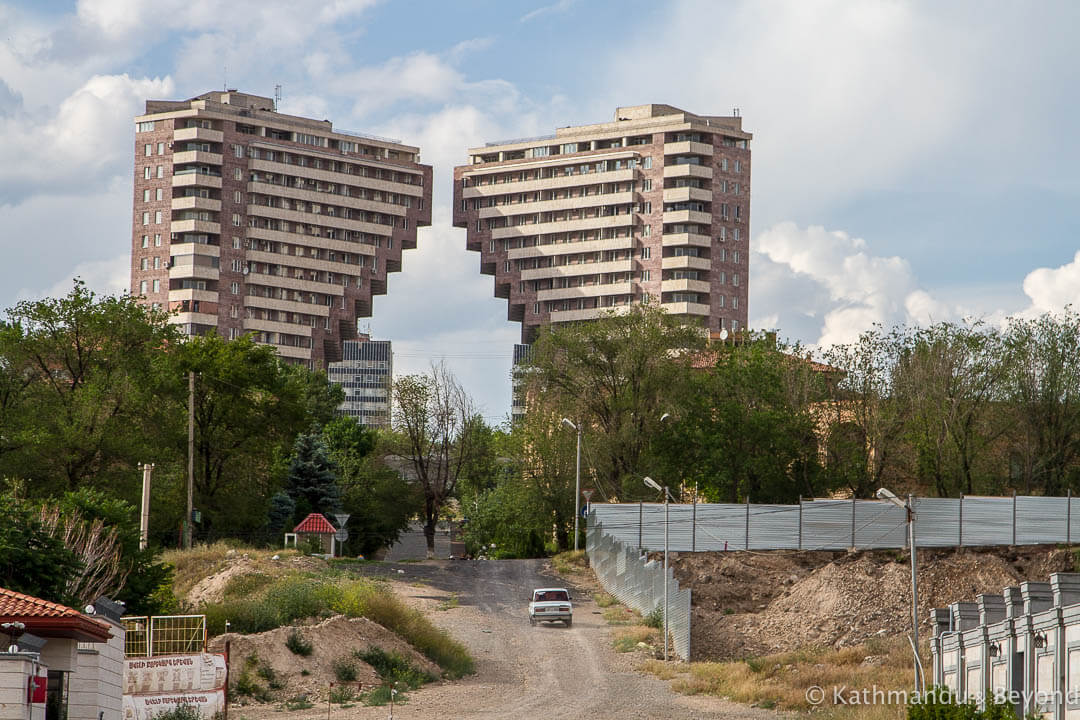
Victory Park and the Mother Armenia Memorial Complex
Back on track, the main reason to enter Victory Park is to see the monumental Mother Armenia Memorial Complex. A huge statue of Stalin, in fact, one of the largest in the USSR, used to be mounted on the pedestal in the centre of the park but was removed in 1962 and replaced with the present-day Mother Armenia in 1967. The complex also includes a couple of T-34 tanks and Soviet jet fighters as well as a military museum inside the pedestal.
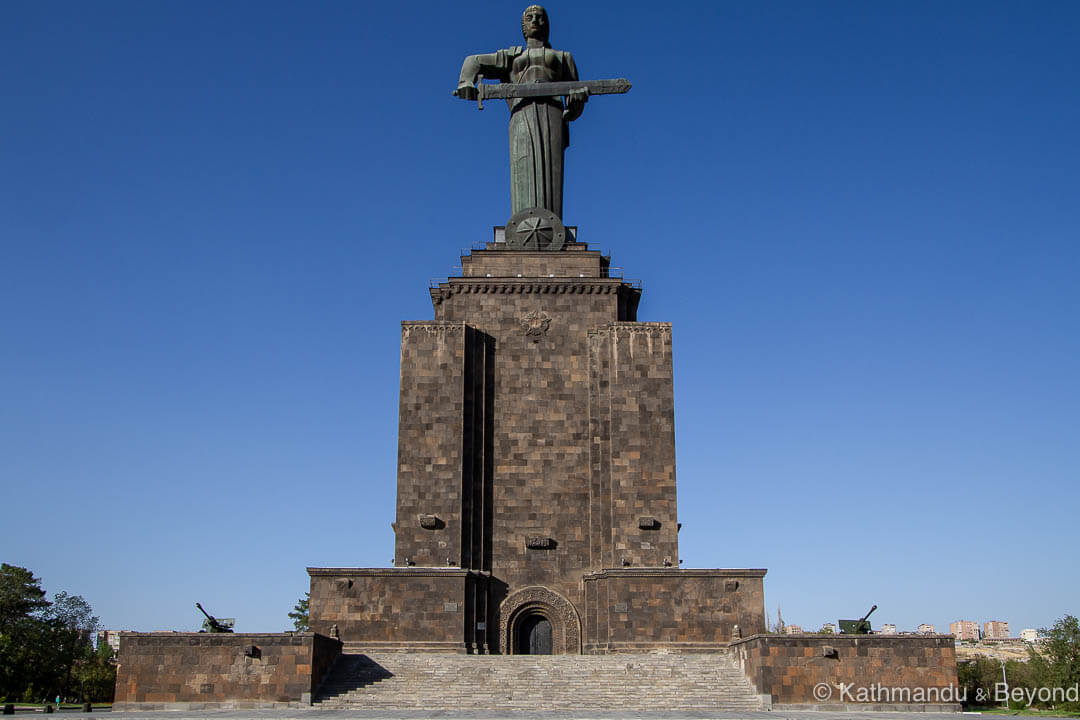
Nearby is the Soviet-era Peace Monument and if you are either up for a spot of urbexing or want a nice view of Mount Ararat, or both, it is worth having a poke around the former Aragil Restaurant which now lies in a state of abandonment. Dating back to the late 1950s/early ‘60s and abandoned in the early 1990s, it is pretty easy to get inside the building if you want to but there isn’t that much to see. There is a passable Bob Marley bit of street art on one of the walls and some bas-relief of a stork (aragil means stork in Armenian) on another but it is the panoramic vista of Mount Ararat and the city below that is the primary reason to spend time here, in my opinion.
Monuments and abandoned restaurants aside, the park is a good place to come and see Armenians at play. There is a small amusement park within the grounds as well as plenty of benches and picnic spots, so it is a good place to while away an hour or so and indulge in a spot of people-watching.
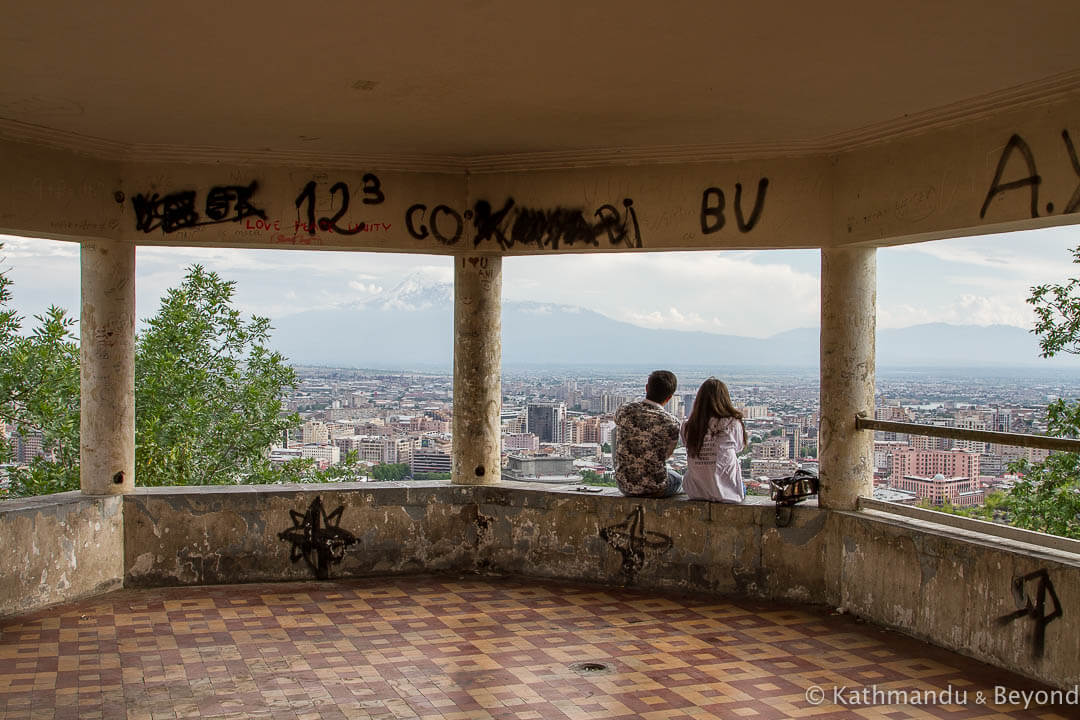
Matenadaran
Before leaving the lofty heights of this part of the city, it is worth heading to the Matenadaran, a library/repository/museum/research institute with the largest collection of Armenian manuscripts in the world. I’ll confess that we haven’t yet been inside, but it is worth visiting to simply see the building alone. Foreboding and very solid-looking, the structure was built out of grey basalt and was influenced by medieval Armenian architecture. Outside the main entrance, there is a statue of Mesrop Mashtots, the man, later to become a saint, responsible for creating the Armenian alphabet around 405AD and who, incidentally, went on to translate the Bible into the Armenian language.
Regular admission costs 1,500 AMD (US$3) and a guided tour ((English, French, German, Russian, Italian, Spanish or Polish available) costs 3,000 AMD (US$6). To take videos and photos (obviously without flash) will set you back another 2,500 AMD (US$5.25). Current opening hours are 10am to 5pm and the Matenadaran is closed on Sundays and Mondays.
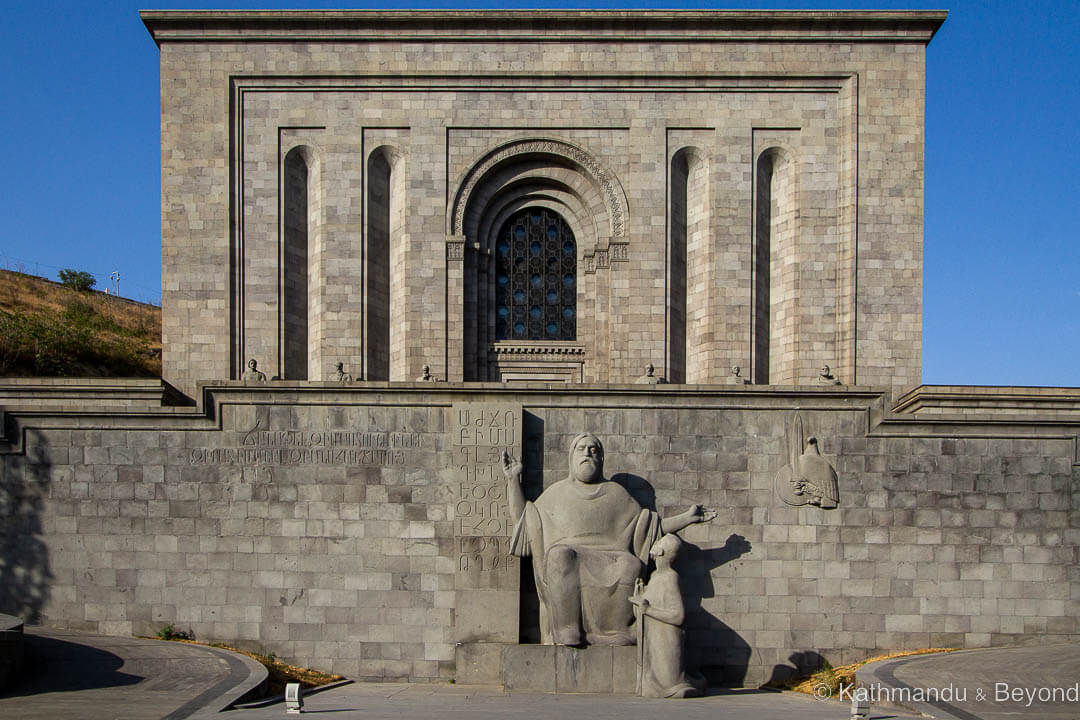
Time required to see the places of interest north of Republic Square
If you take your time seeing the Cascade and people-watching in Victory Park then you need easily the best part of a day discovering the sights north of Republic Square. Allow half a day if you need to speed things up.
Places of interest south of Republic Square
Saint Gregory the Illuminator Cathedral
This relatively new cathedral (2001) has the honour of currently being the largest Armenian Apostolic church in the world. If you are travelling around Armenia then you are possibly going to be seeing a lot of churches, and monasteries, so I won’t rattle on with various facts and figures but it is a nice-looking church and easy to reach from the centre and therefore worthy of a visit.
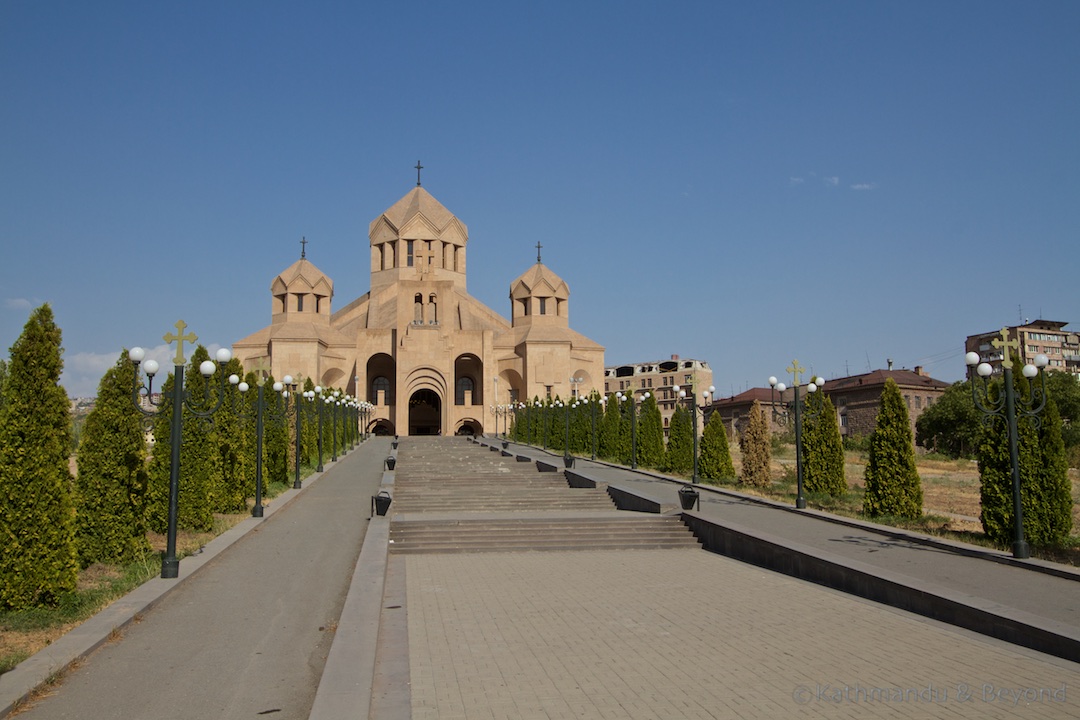
Cinema Rossiya
More impressive in my estimation (yes, I am a heathen) is the nearby Cinema Rossiya (Russia). In fact, if you are walking south from Republic Square then you will arrive at this masterpiece of Soviet modernist architecture before getting to the cathedral. Protruding out into the street and resembling a massive skateboard jump, this humongous lump of concrete was once the largest cinema in Armenia and was designed to resemble the lower and upper peaks of Mount Ararat. It was a victim of the disbanding of the Soviet Union and was abandoned for quite some time thereafter. These days, the ground levels are used as a shopping centre but I’m not sure what the upper levels are now used for.
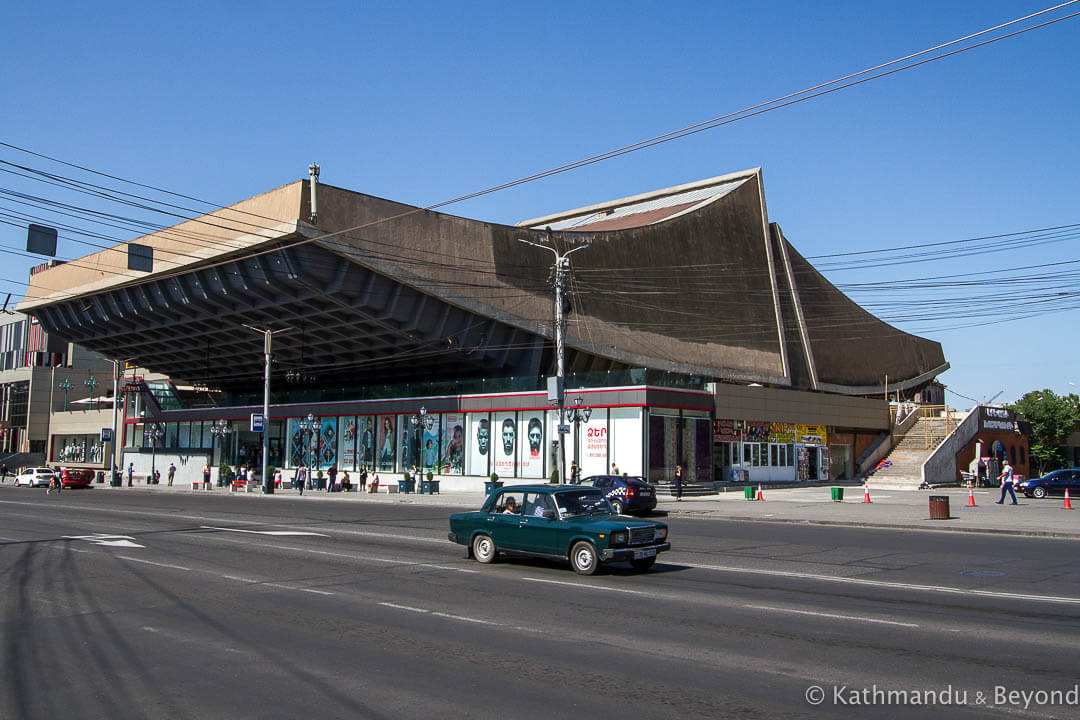
Abandoned swimming pool
Finally in this section, I’ll leave you with a little teaser … not too far away are the ruins of an abandoned swimming pool. Sticking to the urbexer’s code, however, I’m not going to divulge its exact location but if you read our post about the former swimming complex, there are a few clues in it that should help identify its whereabouts.
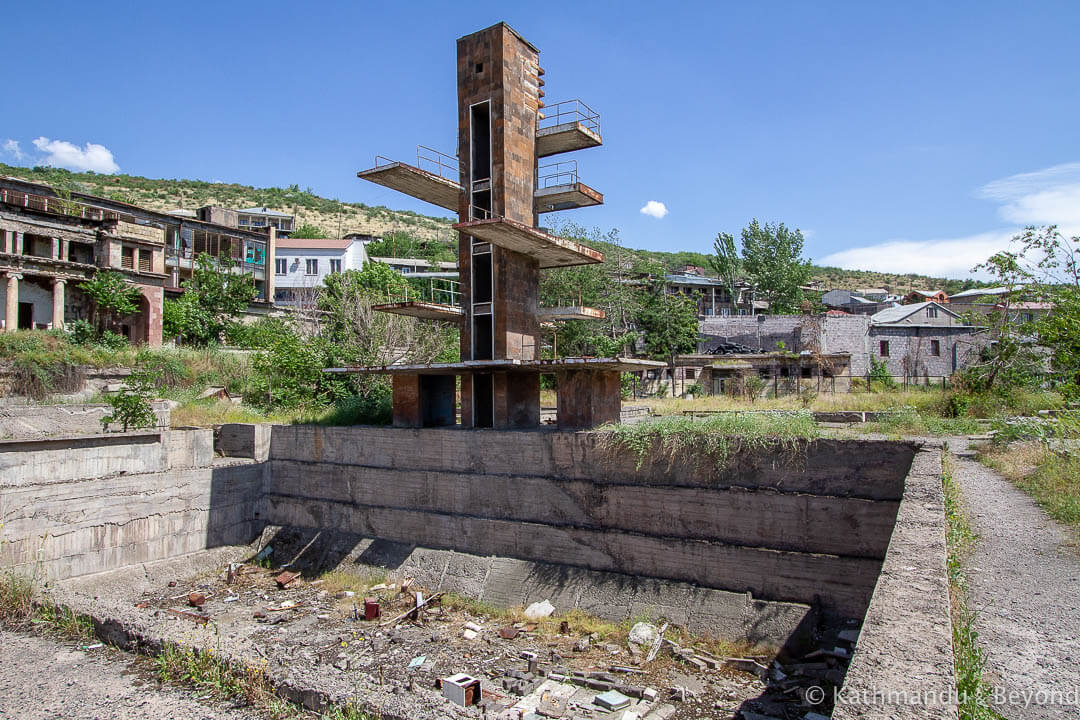
Time required to see the places of interest south of Republic Square
Both Saint Gregory the Illuminator Cathedral and Cinema Rossiya are quite close to Republic Square and given that all you can do is admire the exterior of the cinema, an hour is probably plenty of time to see both. Bank on spending a further half an hour at the abandoned swimming pool if you chose to try and locate it.
Places of interest west of Republic Square
Blue Mosque
The Blue Mosque in downtown Yerevan is associated with the Shiʽite branch of Islam. Dating back to the mid-1700s, the mosque is the oldest and most significant structure in the city from the time when (Eastern) Armenia was part of the Persian Empire (1502-1828). The mosque was secularised during Soviet times (the 1920s) and first turned into a teahouse, then a museum about anti-religion, and then another one about anti-fascism. Thereafter, in 1936, it became the city’s Museum of Natural Science and remained so until the collapse of the Soviet Union in 1991.
The mosque wasn’t damaged during the Nagorno-Karabakh conflict between Armenia and Azerbaijan (1988 and still ongoing) because it is Persian rather than Azerbaijani. It became a functioning mosque once more in 1996, with a large percentage of the funding for its reopening (approximately US$1 million) coming from the Iranian government. In 2015 the structure was leased to the Iranian Embassy in Yerevan for 99 years and they, in turn, now use it as a cultural centre as well as a house of prayer.
The Blue Mosque is an attractive building and certainly worth seeing but it is an absolute mare to photograph because of the position of the sun and the number of trees in the courtyard. It’s probably best seen in winter when all the leaves have fallen off the branches but if the sun isn’t shining the lovely blues and yellows of the mosque’s central dome won’t look their best so, all in all, you’re looking at a rock and a hard place kind of scenario!
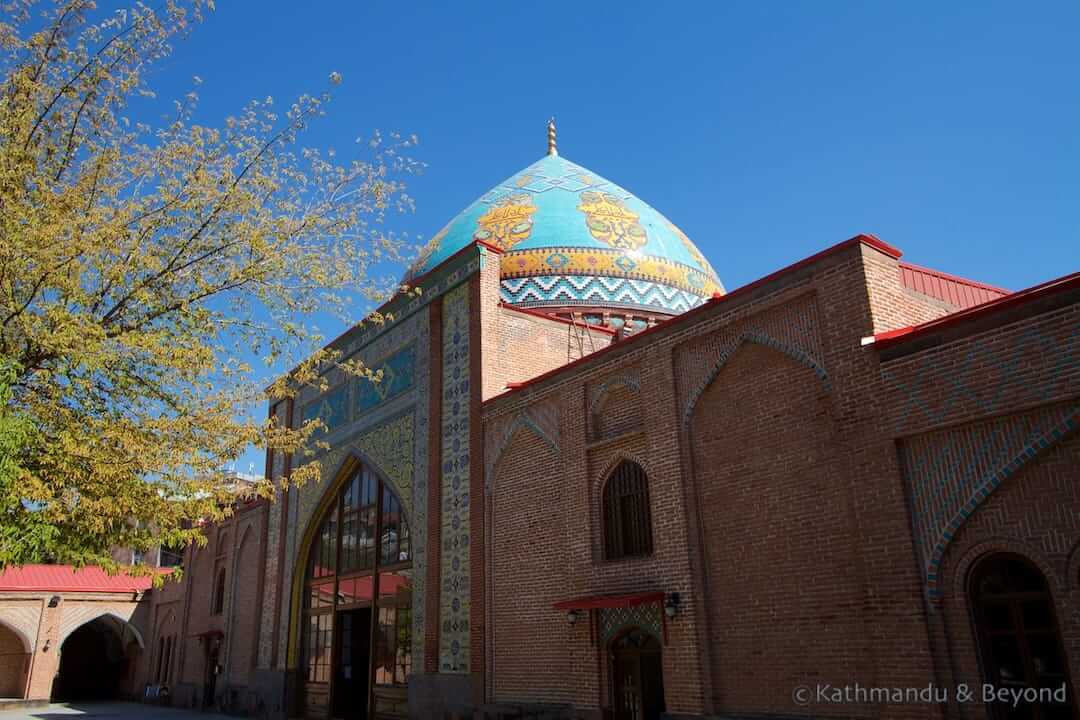
A hard-to-get photo of the Blue Mosque!
Street art/Modern Art Museum,
Yerevan doesn’t have a lot of street art (certainly nowhere near as much street art as Tbilisi has), but there is a wall of it near the Modern Art Museum, which is just over the road from the Blue Mosque.
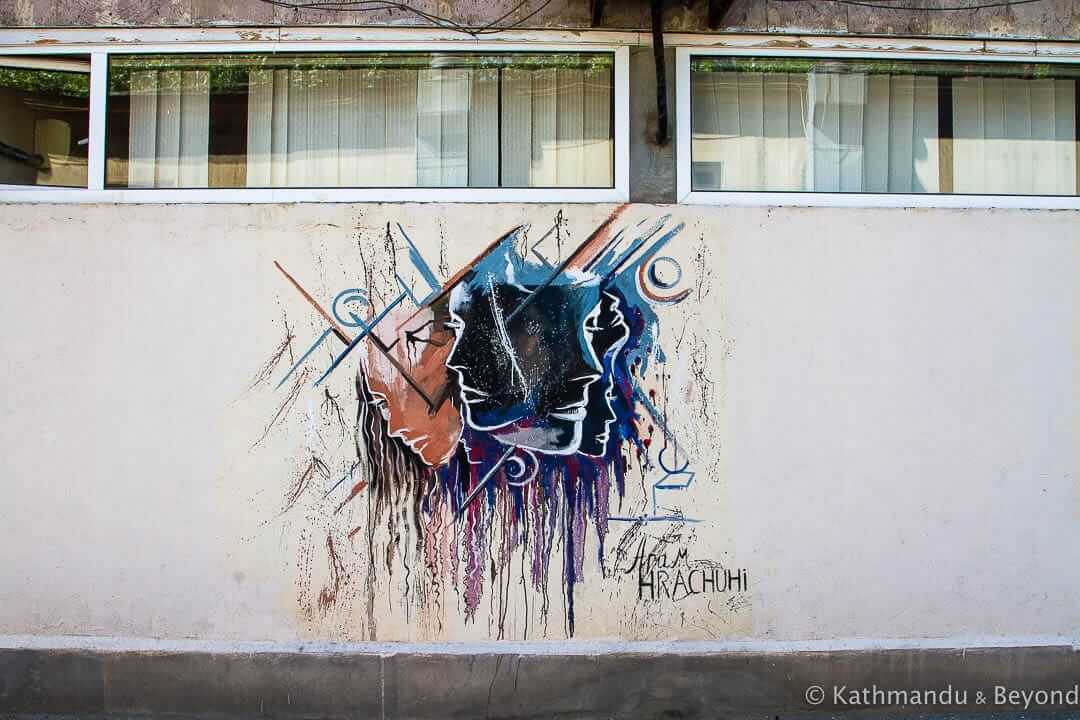
Modern Art Museum
You will have to put in a bit of legwork to see the remaining attractions west of Republic Square but it is worth it as some of the most interesting alternative things to visit in Yerevan are in this part of the city.
Kond Pedestrian Tunnel
Kond Pedestrian Tunnel, which dates back to the mid-1930s and was yet another part of Tamanian’s masterplan for modern Yerevan, is a pedestrian passageway that connects the city centre with Hrazdan Gorge. Nearly half a kilometre in length, the most unusual/interesting part of the underpass is its zigzag lighting system, which extends from one end to the other. The western (city centre) entrance gate is quite tricky to locate so head to the coordinates on our map if you don’t want to get lost and/or spend ages wandering around looking for it, which is exactly what we did!
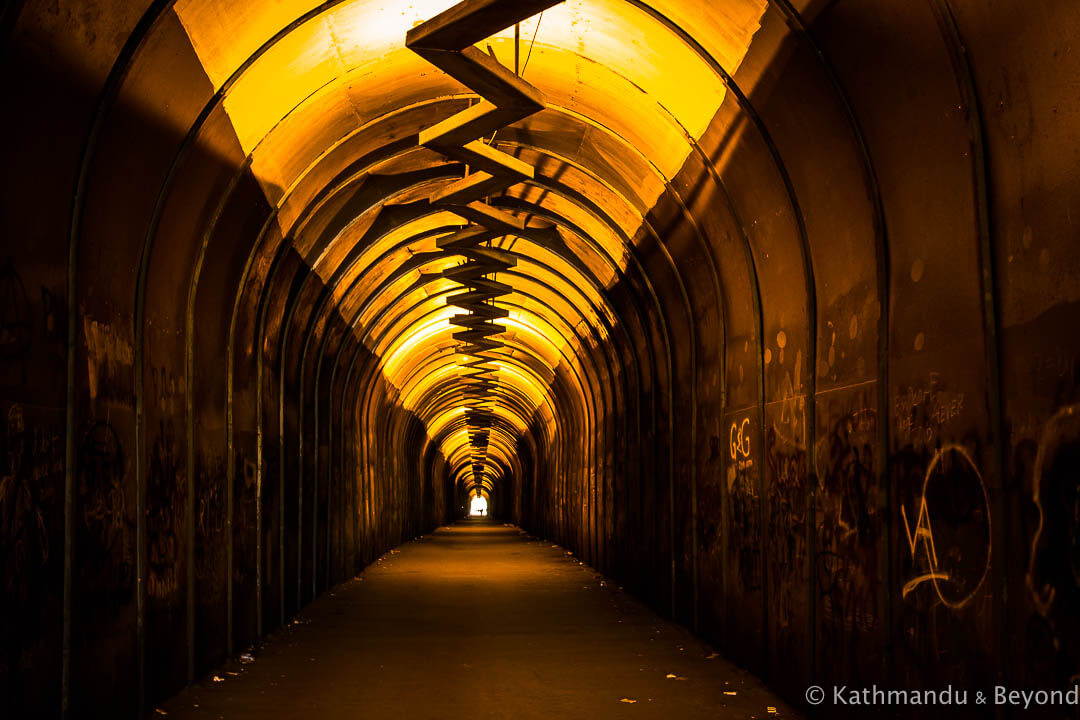
Kond Pedestrian Tunnel
Children’s Railway
The Soviet-era Children’s Railway is a short stroll from the tunnel’s eastern (Hrazdan Gorge) entrance. Opened around the same time as the tunnel, this narrow-gauge railroad does a 2km-loop through Hrazdan Gorge and includes a short ride through a 45-metre tunnel. It operates every twenty minutes or so at popular times or when full at other times, in the winter months, for example. The 1940s station is worth a look but for us the most interesting thing was the abandoned railway carriages which are located just to the right of the station. Contrary to what its name might suggest, anyone of any age can ride the Children’s Railway.
The Hrazdan Gorge, particularly along the banks of the Hrazdan River, which flows through it, is a bit run down and grubby (litter mainly) but it remains a popular place for Yerevanites, especially at the weekend, and so is another good location for a spot of people-watching.
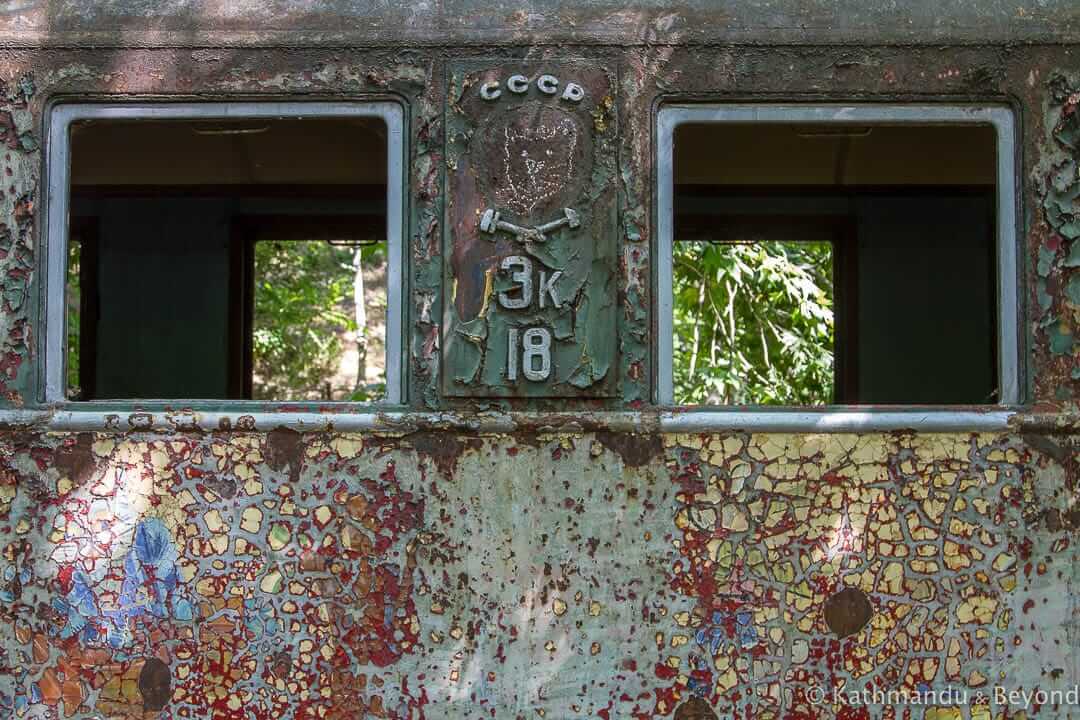
Children’s Railway
Hrazdan Stadium
If you cross to the west bank of the Hrazdan River via the small bridge, you can then walk in a southwesterly direction, mainly uphill, to Hrazdan Stadium. A hulking beast of solid concrete, the stadium was built as part of a series of projects designed to mark the 50th anniversary of the sovietisation of Armenia. At the project stage, it was criticised by the Soviet leadership in Moscow, who pointed out that a city with a population of 750,000 at the time did not require a stadium that could accommodate 75,000. However, the build went ahead and was constructed in a record time of just 18 months. The stadium’s inauguration, at the end of November 1970, was attended by Leonid Brezhnev, the then General Secretary of the Communist Party of the Soviet Union. Hrazdan was the first stadium in the world to be built in mountainous terrain and it was also the first two-storey stadium to be erected in the Soviet Union.
The arena has been inactive for some years now and there is another interesting story connected to the reason why. According to this article in the Armenian online magazine, Urbanista, the company that owned the stadium, Hrazdan Central Stadium (CJSC), received a US$4.5 million loan from HSBC Bank in 2008 in order to host a 2010 football World Cup qualifier between Armenia and Turkey. Anyone aware of the recent history between the two countries, namely the Armenian Genocide that was perpetrated by the Ottoman Empire between 1915 and 1923, will instantly realise what a big deal this football match would have been. An olive branch on the one hand and a diplomatic nightmare on the other, the long and short is that the game did go ahead despite numerous organisational problems, which included Armenian picketing of the game and the logistics of getting 5,000 Turkish fans across a border that was (and still is) firmly shut. But, the event bankrupted CJSC. The company was only able to pay back US$1.5 million of the money they borrowed and they were declared insolvent.
In case you are wondering, Turkey won the football match 0-2.
The fate of the structure is uncertain but in 2018 it was placed on a tentative cultural monuments list by the Armenian Ministry of Culture which will be a step in the right direction regarding its preservation if the list is approved.
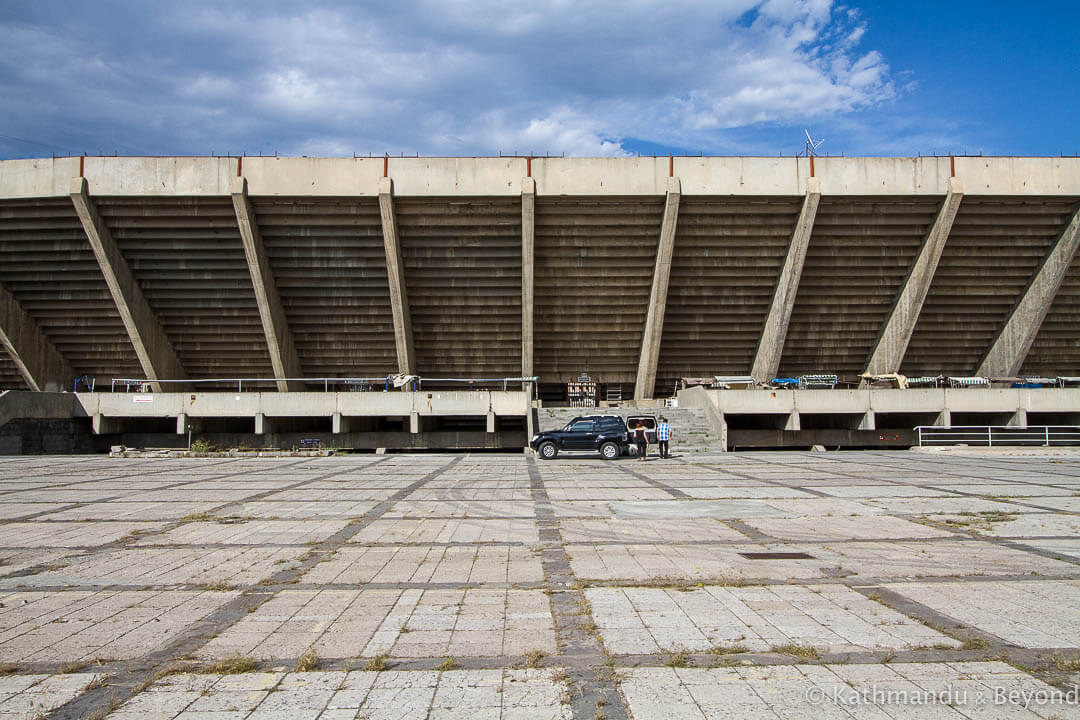
Hrazdan Stadium
Armenian Genocide Memorial Complex
The Armenian Genocide Memorial Complex commemorates the approximately 1.5 million ethnic Armenians who were either systematically mass murdered, starved to death, forced into labour camps or deported by Turks of the Ottoman Empire. The Armenian genocide started during the First World War (1915) and continued until 1923. The complex is one of the country’s most poignant places of pilgrimage for Armenians and a must-see for anyone visiting Yerevan.
There is a path that leads uphill from Hrazdan Stadium to the backside of the memorial complex. The hill, on which the complex is located, is called Tsitsernakaberd (“Swallow’s Fortress”) and this is the Armenian name for this place of remembrance. If you arrive via this route then you will first see the memorial itself, which comprises an eternal flame surrounded by a circular monument made of twelve basalt slabs. The slabs represent twelve provinces in Western Armenia that were lost to Turkey when the latter signed a post-World War I peace deal with Russia. The eternal flame is dedicated to the victims of the genocide and the 44-metre high stele, which stands nearby, represents the national rebirth of the Armenia people. Both the memorial and the stele were erected in the late 1960s. There is also a subterranean museum on-site, which was added in 1995, as well as a mourning wall and a park where visiting dignitaries plant trees in memory of those who were lost during the genocide.
The memorial complex, including the museum, is free to enter and on a clear day, Mount Ararat can be seen in the distance.
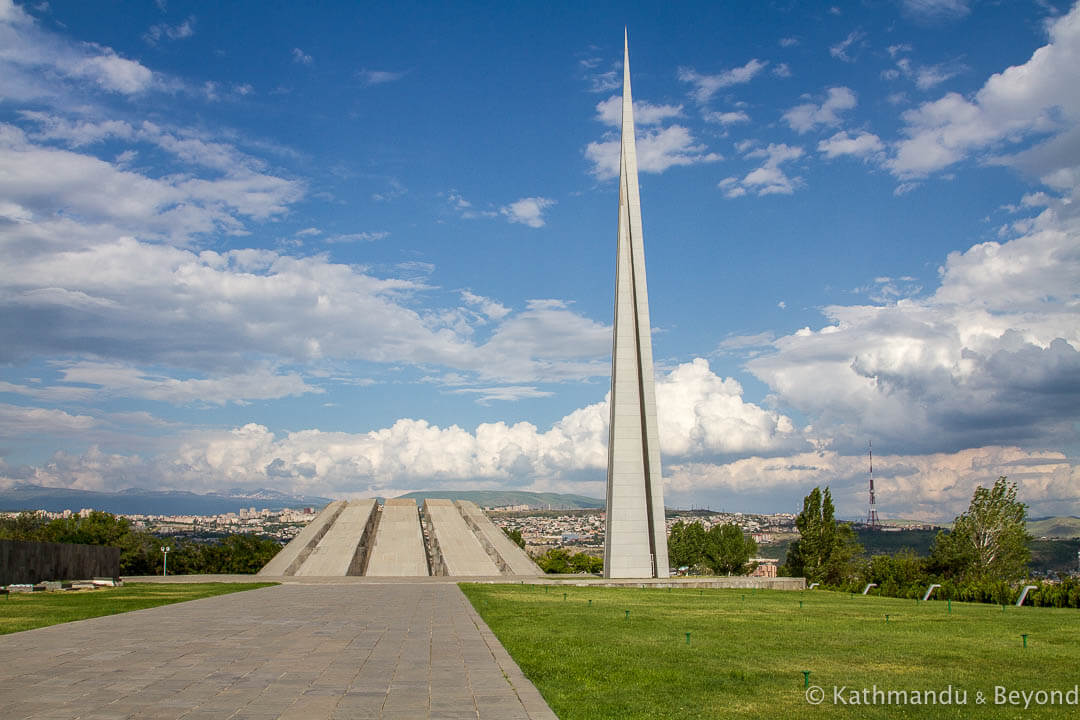
Armenian Genocide Memorial Complex (Tsitsernakaberd)
Karen Demirchyan Sports and Concerts Complex
If, like us, you are keen on Soviet-era architecture then you won’t want to miss the Karen Demirchyan Sports and Concerts Complex. A short walk from the genocide memorial, the venue, which is also called Demirchyan Arena, Sports & Music Complex or simply Hamalir, is a mishmash of curves, fountains and that distinctive Soviet-Armenian bas relief that you’ll find on other buildings in the city that date from the same era. In fact, it’s an incredible piece of architecture and one of the best examples of the genre that we have seen. The powers that be in Moscow must have thought the same thing because the team of Armenian architects who created the project were awarded the coveted USSR State Prize in 1987 for their endeavours.
In case you’re wondering, Karen Demirchyan was a Soviet and Armenian politician. He served as the First Secretary of the Armenian SSR from 1974 until 1988 and later in his career, as the President of the National Assembly of Armenia. He was assassinated in the Armenian parliament shooting more commonly known as October 27 because of the date on which it took place: October 27, 1999. He was posthumously awarded the title, National Hero of Armenia.
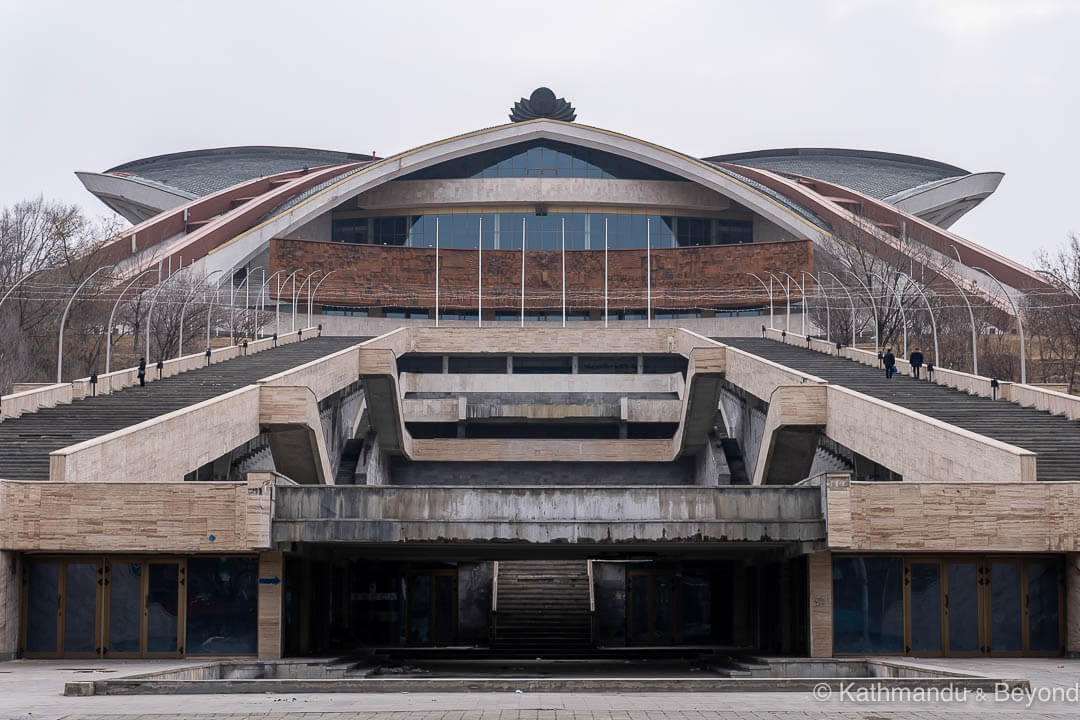
Yerevan Brandy Company
I don’t think either of us has ever tried brandy in Armenia. We are not big fans of the spirit and, furthermore, visiting any sort of distillery or anything else connected with the production of booze, a vineyard, for example, bores us both silly. We are definitely in the “prefer to drink it” camp! But, it would be remiss of me not to mention the Yerevan Brandy Company and the fact that you can take a guided tour of its cellars, learn about the various stages of production and taste the stuff for yourself. Everything you need to know about visiting the factory can be found on this website. The Yerevan Brandy Company is reasonably close to Hrazdan Stadium.
Time required to see the places of interest west of Republic Square
This is easily a full day of sightseeing, especially if you include a tour of the Yerevan Brandy Company. The other reason why I suggest allocating a day for this part of the city is because it involves quite a bit of walking. You could cut down on some of it, however, by taking a bus from the Modern Art Museum partway to Kond Pedestrian Tunnel and then continuing by foot thereafter.
Places of interest away from Yerevan centre
The following places cannot be reached on foot and you’ll need to tackle public transport or take a taxi in order to visit them independently.
Erebuni Fortress
There isn’t a whole lot to see at Erebuni Fortress, which means “Fortress of Blood”, but if you’re interested in the classical history of Armenia, you might want to consider a visit. Also known as Arin Berd, the citadel dates back to 782 BCE and was one of a number of fortified strongholds constructed by the people of Urartu to defend their northern borders. The origin of the name Yerevan is derived from the word Erebuni.
The area was only rediscovered in the late 1950s and you’ll find various artefacts discovered in the subsequent archaeological digs inside the Erebuni Museum of History, which is positioned at the foot of the hill. The museum is wonderfully dated and harks back to the Soviet era (1968). For us, it was the highlight of visiting this ancient site!
To get to Erebuni Fortress, we took marshutka #11 from outside the Marriott Hotel in downtown Yerevan. The museum is open from 10.30am to 4.30pm daily, except on Monday when, like most museums, it is closed.
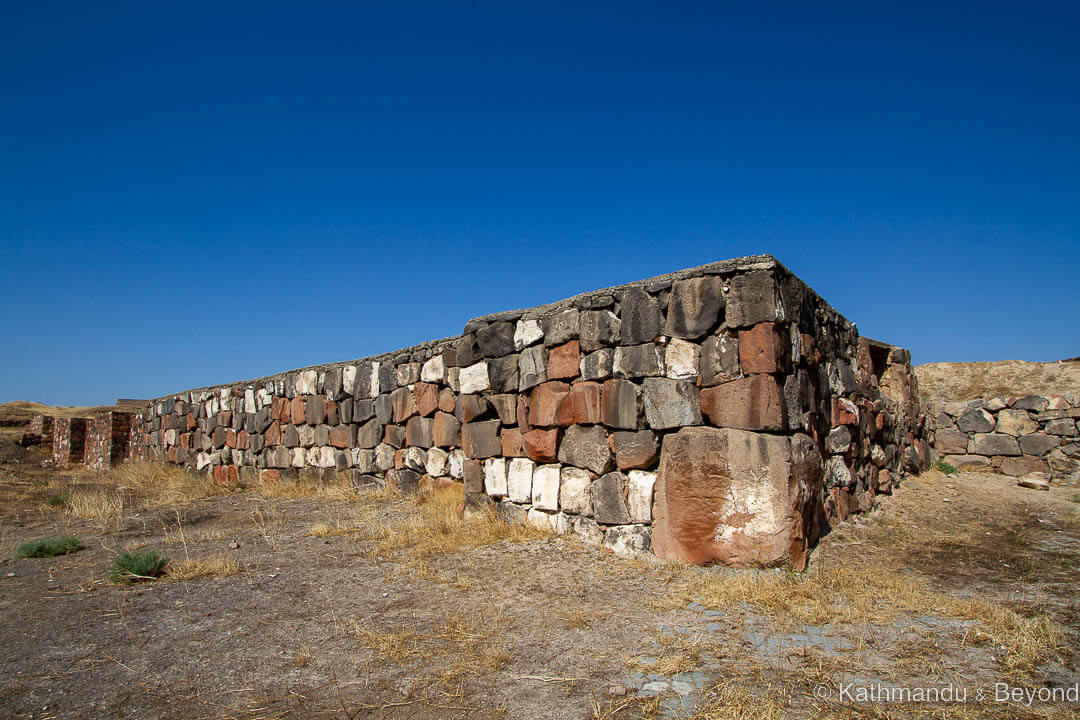
Former Control Tower Zvartnots International Airport
If you are flying into Yerevan then you can tick this Soviet modernist gem off your list before heading into town but if you are already in the city or arrived via another means of transport then it is worth making the trip out to the airport if this style of architecture flicks your switch. The terminal is no longer in use and it’s not possible to get inside it but you can still get a great view of it from the departures level of the brand-new airport terminal building, which sits alongside the old one. The terminal buildings that surround the control tower have been slated for demolition for some time now but it looks like the tower, which is considered a historical-cultural monument, is going to remain in situ regardless of what happens around it.
Getting to Zvartnots International Airport is easy. One option would be to take the Airport Express Bus which leaves downtown Yerevan every half an hour, this is the faster but more expensive option. You can also take a couple of public buses: #201 from the Opera House, or marshrutka #107 from Barekamutyun Metro station. Buses will drop you a couple of hundred metres away.
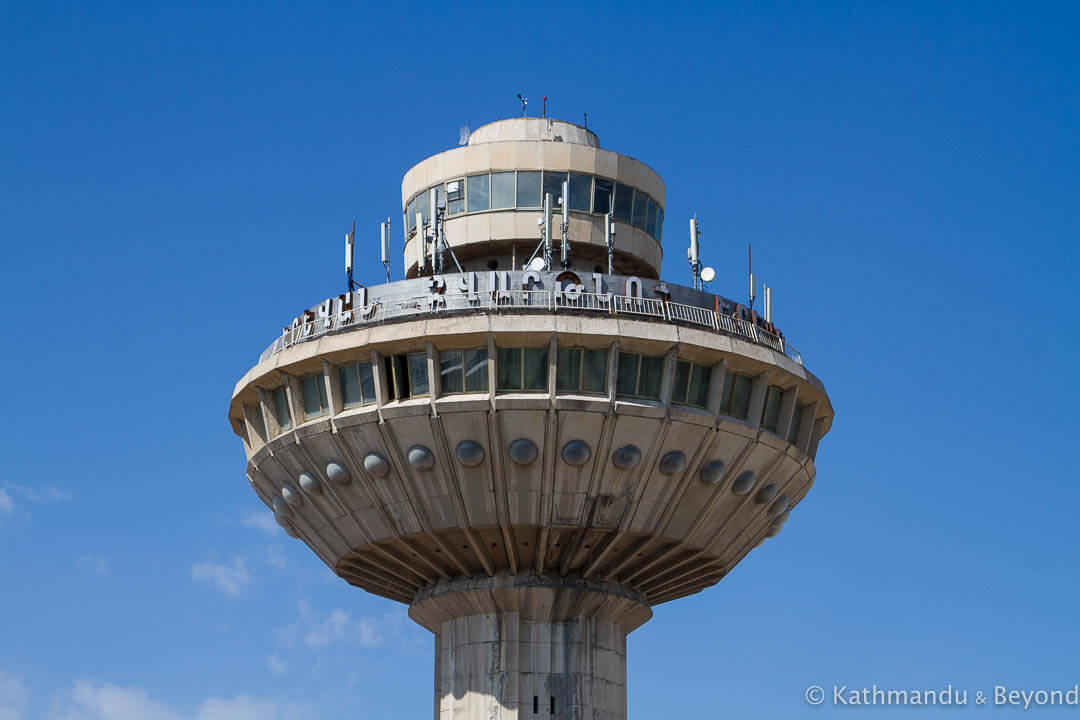
Getting around Yerevan
One of the biggest headaches for tourists travelling around Yerevan is public transport. The Metro is easy enough to use but when it comes to buses, trolleybuses, microbuses and marshrutka things can get a bit complicated. Schedules and signs are rarely in English and there is no official online information. Google maps will help you out with Metro routes, but not buses.
There is a highly recommended app called A2B Transport which lists all public transport options but unfortunately, it is only available for Android devices. You can get it on Google Play.
Taxis are plentiful in Yerevan, but scams and giving tourists the runaround is not unheard of. There is no Uber in Yerevan, but there are other taxi apps including GG Taxi and Yandex.
Day trips from Yerevan
Yerevan makes a good base for day trips to other places in Armenia. There is Garni, the only Greco-Roman collonaded building in the former Soviet Union, Echmiadzin Cathedral, the Armenian equivalent of the Vatican, the Armenian Alphabet Monument and, of course, Khor Virap, one of the country’s most iconic monasteries and viewpoints. The list goes on but, lucky for you, Kirsty has compiled a comprehensive post about day trips out of Yerevan that includes details of how to reach them by public transport.
We have also written a post about the best places to break the journey between Yerevan and Tbilisi (or vice versa) if you don’t want to do the journey in one hit and/or want to visit some of Armenia’s lesser-visited towns and cities.
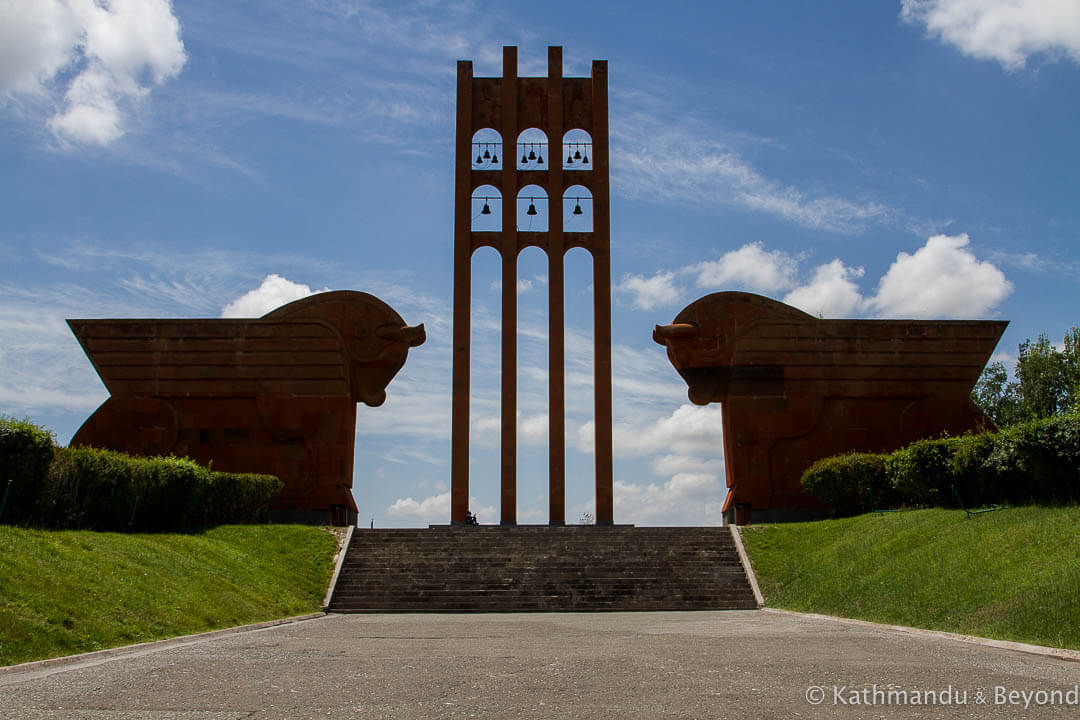
Where to stay in Yerevan
On our most recent visit to Yerevan, we stayed at Welcome Yerevan Apartments, a conveniently located apartment close to Republic Square close to shops, restaurants and public transport options. Our one-bedroom apartment was a good size and was a great base for an extended stay.
However, I want to give a special mention to Hostel Glide in Yerevan. The rooms are good value for money, there’s a shared kitchen, washing machine as well as a (decent) breakfast included in the price. But it’s the people who run Glide Hostel that make it such a great place to stay. Anna and her mum, Karine, go out of their way to make you feel at home and are the perfect hosts. Anna knows a great deal about her city and even helped us locate some of the Soviet-era architecture that we couldn’t find ourselves. Karine, is a wonderful and fun lady who is great to engage in conversation. Both mother and daughter speak excellent English.
And then there’s Brinkley the Golden Labrador. Named after Tom Hank’s Golden Retriever in the movie, “You’ve Got Mail”, Brinkley is a lovely dog who will be your best friend forever if you give him some of your beer snacks while you’re sitting on the front porch drinking a cold one. He’s well behaved and knows not to enter the kitchen area and he never comes upstairs to the bedrooms.
The hostel is not centrally-located, but it is only a few minutes’ walk from Barekamutyun Metro Station, from where you can easily reach anywhere in the city. We really enjoyed staying there and would recommend it.
Other hostels that have been recommended to us by friends and fellow travellers include Domino Yerevan Hostel, Envoy Hostel, and Kantar Hostel.
If you’re more of a flashpacker or are looking for a mid-range hotel, we’ve stayed at City Centre Hotel By Picnic which has a good central location. Other options to consider are the Elysium Gallery Hotel or Mashtots Hotel. Taking it up a notch, the Republica Hotel is highly recommended, and if you really want to blow the budget, The Alexander is the place to be!
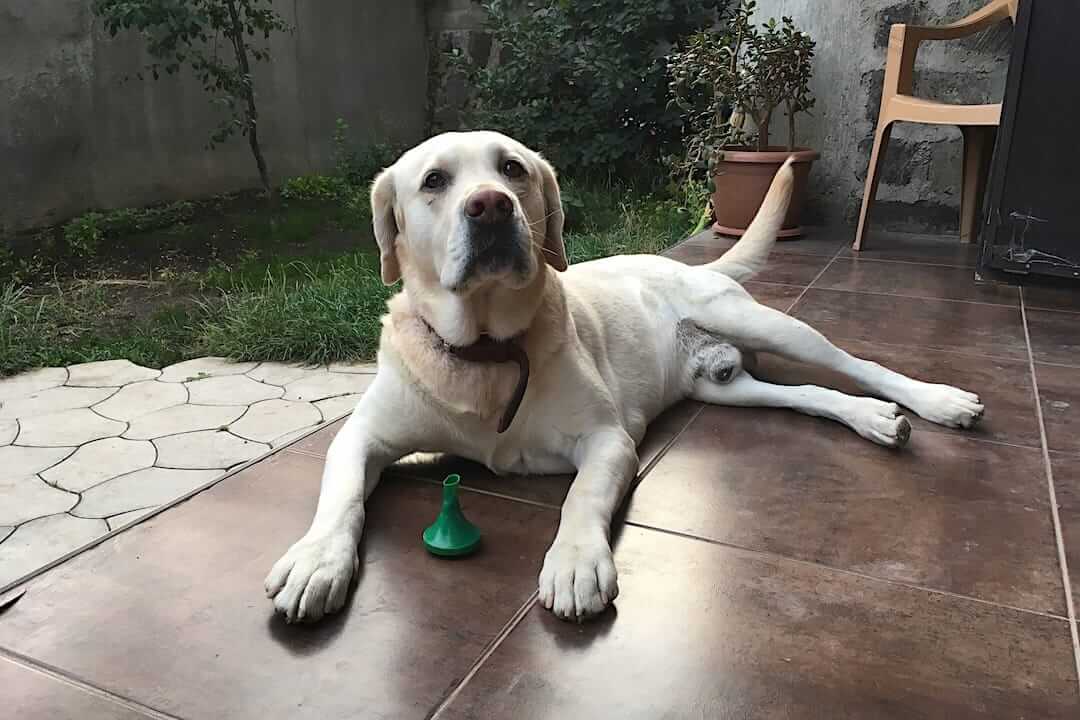
IF YOU FOUND OUR GUIDE ON WHAT TO DO IN YEREVAN HELPFUL, PLEASE SHARE IT…
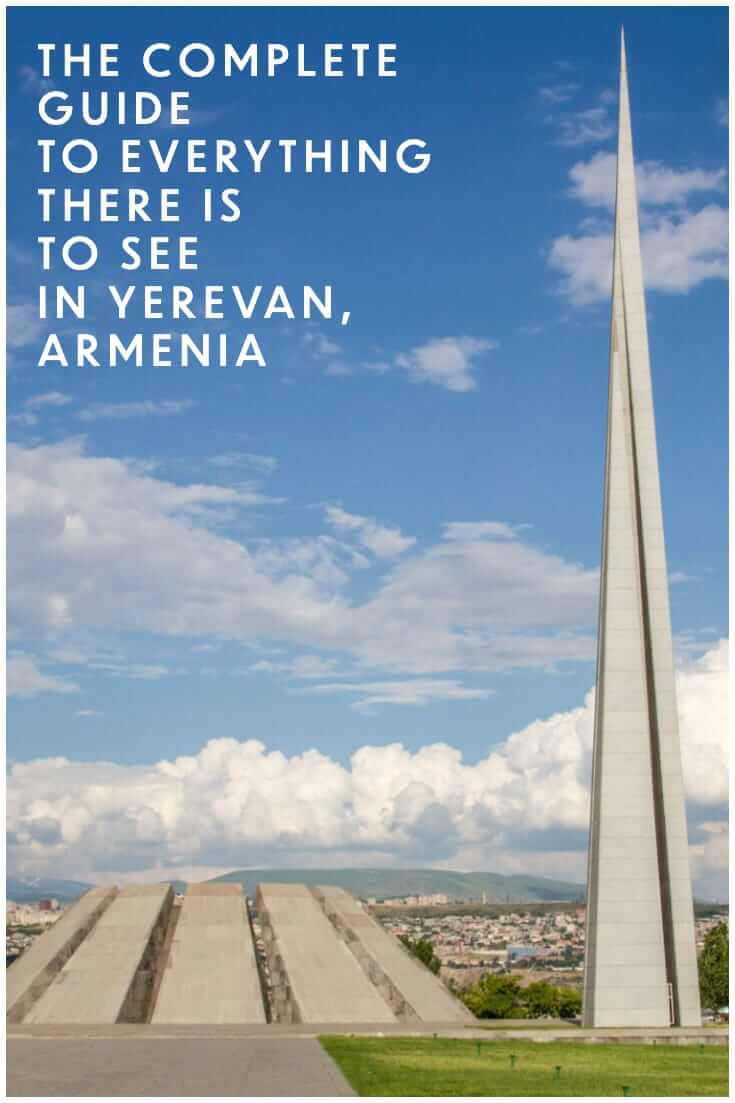
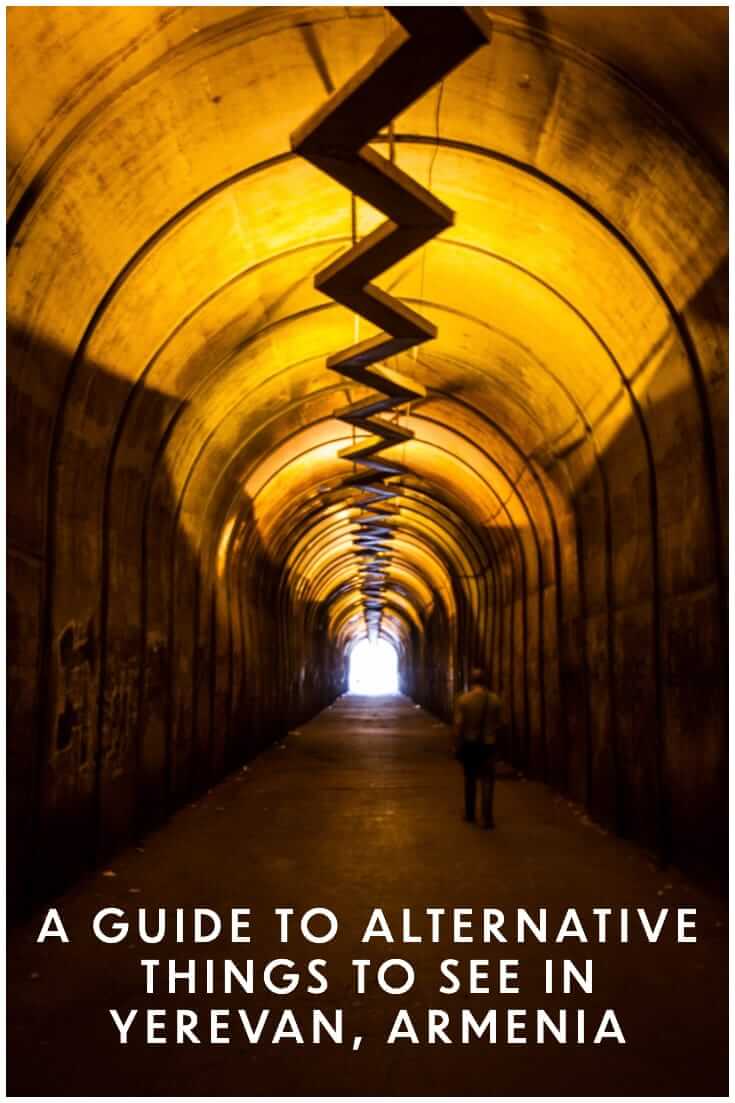
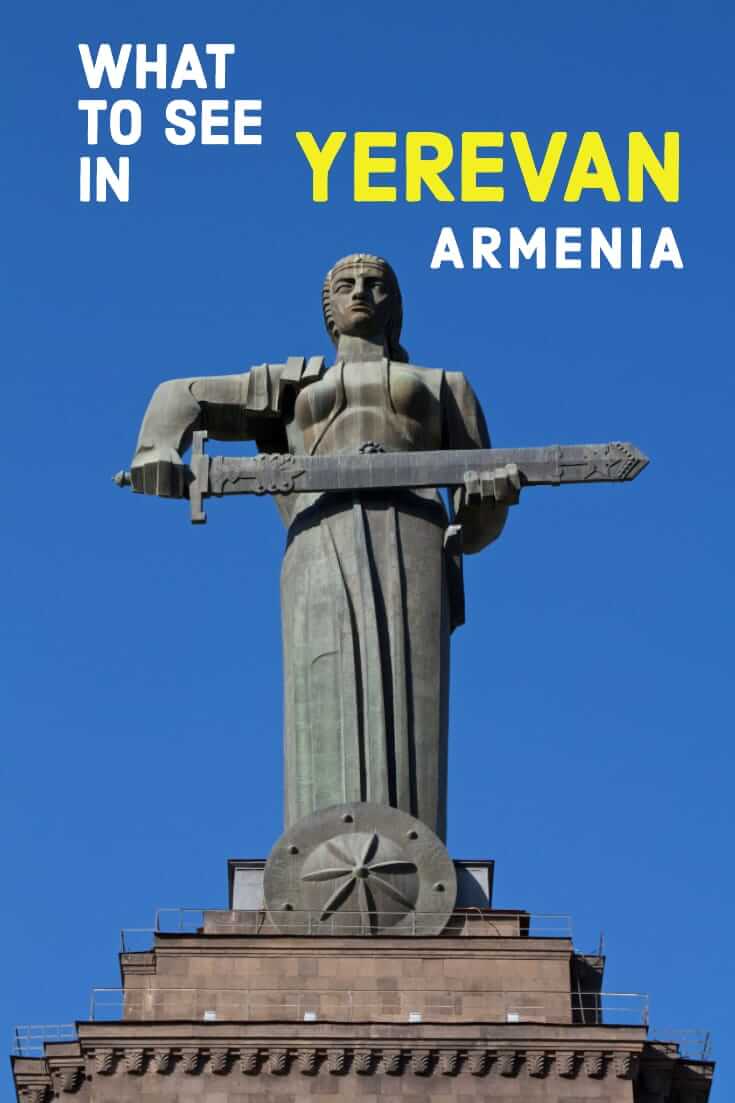

Trackbacks/Pingbacks